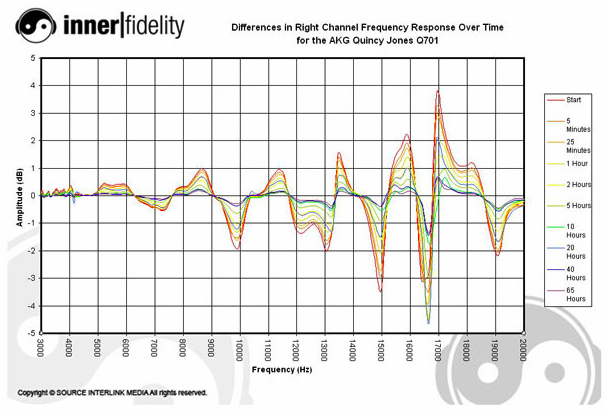should we just accept an effect, and even better, accept it is audible and significant because it seems reasonable? is that the modern way of finding evidence?
for speakers, I've seen a bunch of data like
@jagwap posted, those seem convincing(with the assumption that the experiments were done properly) and suggest measurable impact on various speaker drivers. with much fewer possible causes for sound change on speakers, it becomes easier to suggest causality. but while I've seen evidence suggesting change, I haven't seen much of anything about the greater details you see as an obvious result.
I also haven't seen the same sort of data for headphones. all I seem to find are poorly done experiments that neglect to consider other known causes of change by ignorance or on purpose to try and prove a point no matter what. what I've seen done with a little more care, always confirms change in sound over time for the headphone as a whole, but nothing of significance for the driver itself. my own attempt resulted in getting more significant changes from pretty much anything other than the driver alone. measuring at night would get me more variations than what I seem to be able to identify otherwise as being solely caused by the driver. so when I read claims of causality between audible difference and driver burn in based on subjective impressions, I can't help but facepalm. even if I was to ignore all the biases, placebo, and memory inaccuracy, I would still facepalm when reading those comments because they are measurably irrational. changes do happen for plenty of reasons, driver burn in is only one of them and seems to be consistently less significant than new pads, the room temperature, the source, if we played music too loud for the headphone specs, or if we dropped the headphone on the floor a few times.
as for your post specifically, the diaphragm becoming easier to move and bend over time, again that seems logical. how that will lead to the driver being more efficient should absolutely be measurable, but where are those measures for headphones? when I get consistent data on that, then and only then I'll agree with you and move on to the next step, finding out if and how audible those typical changes can be for a listener. but when you decide that this effect results in greater details. where did you get that idea?
why not lower mechanical damping leading to worst control, increased ringing and distortions, or plain shift in the resonance frequency leading to a change that isn't necessarily better or worst? that would seem just as reasonable to me it if were to happen. I guess how strong an electrical damping we have, how light the diaphragm is, and how open the headphone design is, would ultimately decide if we go toward better or worst fidelity. but all that is conjecture based on the hastily picked axiom that we'd get significant impact from the loosening of the material on a headphone. we can have ideas and make guesses all day long, and we should, but that alone doesn't demonstrate anything. experiment and measurements will provide the data for that. yet, not much to be seen as evidence of something so apparently obvious when following your reasoning.
are you talking about headphones? I know I'm annoying but I could easily confirm small changes in my speakers with measurements, I never had such an easy time with headphones and IEMs once I removed pads, tips and placement from the equation. so I feel that headphone do deserve to be treated separately. maybe even individual drivers would deserve their own study, as more and more have shapes to reinforce the diaphragm at key places and facilitate movements at others. it's a little frustrating to think that manufacturers have all the data we need, but I'm here playing with one or 2 samples of a model at a time, never getting any statistically relevant result. and debating with people who mistake gut feeling for evidence is really not helping us going anywhere productive.






















